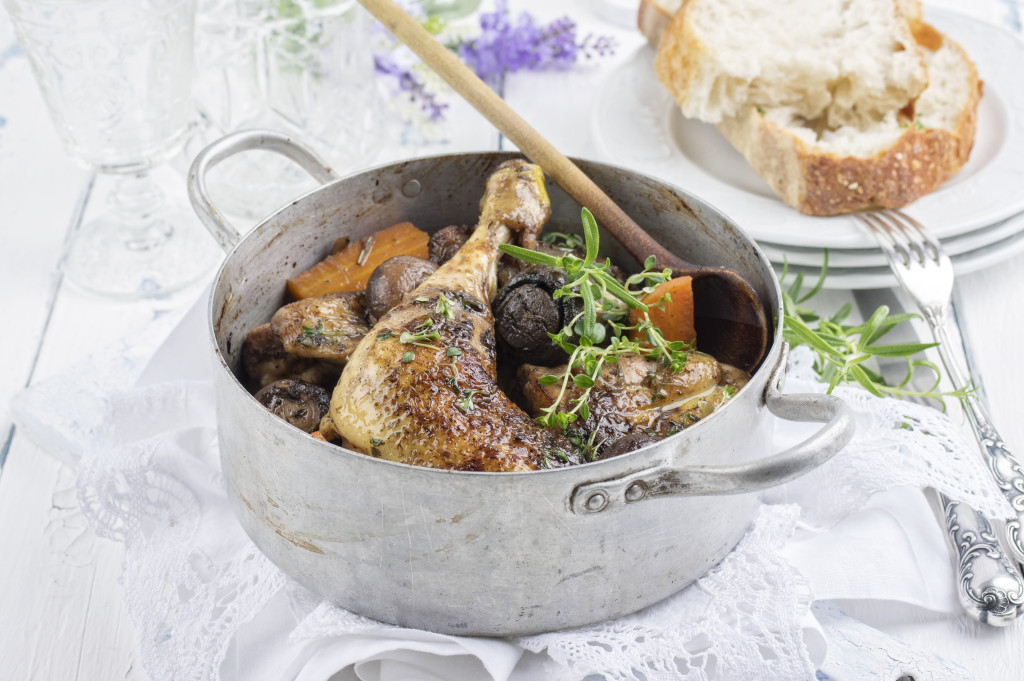Born of frugality, Coq au Vin is a slow-cooked classic French recipe that combines poultry and wine into a braised dish of delectable proportions. Traditionally, the recipe is highlighted by its inclusion of button mushrooms, pearl onions, and lardons—matchstick-sized pieces of bacon.
Coq au Vin is the second cousin to Boeuf Bourguignon, which is essentially the same recipe, except that cubes of beef are used instead of pieces of poultry.
Regional Variations
Coq au Vin is most closely associated with the Burgundy region of France, so many recipes call for Burgundy wine. However, there are many regional variations of this dish in many parts of Europe that substitute local wine and may even change some of the ingredients.
For example, in the Alsace region of France, near the German border, the coq au vin recipe calls for Riesling, a white wine.
In the Jura region in eastern France, Coq au Vin Juane is the predominant recipe variatio. It uses Vin Juane, a wine made from late-harvest grapes so it has a very similar flavor profile to Sherry, although Juane is not a fortified wine as is Sherry. This recipe also calls for the addition of crème fraiche and a substitution of morel mushrooms for the button mushrooms. Unlike the rustic heritage of the traditional dish, this version is sometimes referred to as the “king” of coq au vin variations, presumably because of such expensive ingredients as the Vin Juane, morels, and crème fraiche.
How To Make Lardons
Start with thick, pre-sliced bacon strips, or, if using unsliced bacon, cut strips about 1/8 to 1/4 of an inch thick. Lay the bacon strips on a flat surface and cut across the strips into 1/4-inch pieces.
Origins
Coq is the French word for cock or rooster. Originally, coq au vin was a way to use older roosters that had outlived their usefulness as breeders. Being several years old, the roosters were tough old birds and need long and slow moist-heat braising to render them palatable.
The specific origins of the recipe are not clear, and some stories associate Napolean and Caesar with its invention, but historical records are not conclusive. Commonly accepted belief holds that the recipe is about 400 years old and came from rustic beginnings, poverty, and thrift.
Within the last 100 years, the dish has been elevated to the ranks of fine cuisine with fresh chicken and premium wine substituted for such humble ingredients as an old rooster and old wine.
In the Lobels’ book, Meat and Wine, you can find recipes for Chicken in Red Wine (Coq au Vin) on page 158 and for Chicken in Creamy Riesling Sauce (Coq au Riesling) on page 156.
Have you ever made Coq au Vin? Have you enjoyed it at a fine restaurant? We’d love hear all about it! What’s your favorite variation of this classic dish?




Leave Your Response